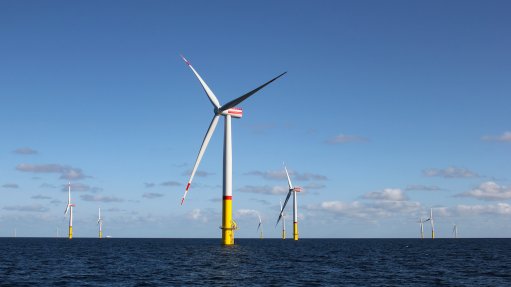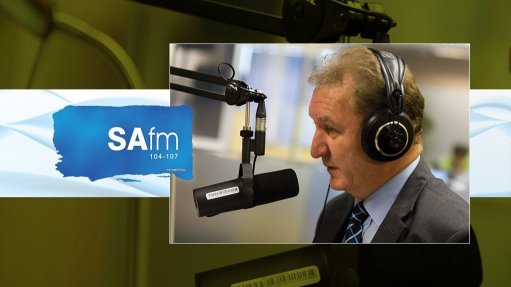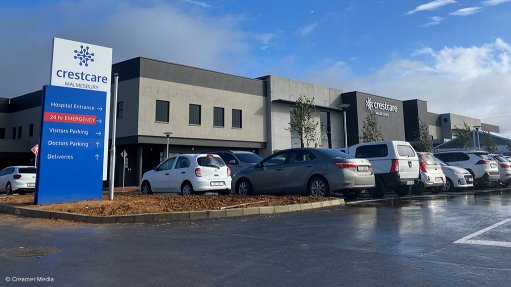SLIDING THROUGH TIME: Lubrication from Stone Age to Modern Age - part 3 of 4
This article has been supplied as a media statement and is not written by Creamer Media. It may be available only for a limited time on this website.
In part two of Lubrication from Stone Age to Modern Age (Technical Bulletin 89), we slid through 145 years of action-packed lubrication history and left off towards the end of the Gilded Age, full of hope and fuelled by endless technological possibilities. What was not to love? We had electricity, telephones, toasters, cars on the road, planes in the air and plenty of oil to lubricate the machines born of our wildest imagination.
EARLY 20TH CENTURY (AKA THE GOLDEN AGE OF FLIGHT)
1760-1840 CE
Historical context
The next leg of our journey finds us in the closing years of the late modern period. This was a time of unprecedented change and upheaval, and the events that would unfold over the coming decades would reshape the world in a profound way.
This was the quiet before the storm, the eve of the first world war and what would become the start of the bloodiest chapter in human history. Also called The Great War, World War one (WWI) would claim the lives of over 20 million people in four years and set the stage for yet another world war just 20 years later.
The sad truth is that war creates the conditions for great advances in technology, and so it was for those early years of the 20th century, where we saw significant discoveries, inventions and innovations across various fields.
Honourable mentions from this time period include the theory of special relativity, the principles of quantum mechanics, Rutherford’s Nuclear Model, and the discovery of penicillin and insulin. As for inventions, there was the assembly line, television, motion pictures, the electric refrigerator, the zipper and all that jazz.
Guest appearances include Ernest Rutherford, Robert Goddard, Niels Bohr, Max Planck, Alexander Fleming, Admiral Richard Byrd and Sigmund Freud - the Austrian psychoanalyst with mommy issues.
1908 CE
Demand for crude oil continued to increase steadily as the second industrial revolution drew to a close and petroleum based lubricants became commonplace; but things were about to go into overdrive, thanks to one man with an audacious dream – Henry Ford, the man who put the world on wheels.
The development of the Model T began in 1907, when Henry Ford and his team set out to create an affordable, reliable, and efficient car that could be produced in large quantities for the general public. That dream became reality when the first Model T Ford or “Tin Lizzie”, as it affectionately became known, rolled off the assembly line in October of 1908. The engine lubricant of choice for this contemporary engineering marvel was an additive-free SAE 30 monograde oil produced by Veedol, called “Fordol”, which also served as transmission fluid.
Prior to the introduction of the assembly line system in 1913, the record time for building one Tin Lizzie stood at just over 12 hours. Under this new system, a car could be assembled in 1 hour and 33 minutes allowing Ford to produce 1,000 cars a day.
Mr Ford, in a controversial move, also raised the minimum daily wage for factory workers from $2.34 to $5 and reduced their working hours. The morning following the wage hike announcement 10,000 men showed up at the Ford Michigan plant eager for a job.
This altruistic gesture was not borne out of charity, but good business sense – his workers could now afford to buy the vehicles they built, which created loyalty towards Ford and sparked a rise in middle-class consumerism among workers. Happy workers, happy assembly line.
1909 CE
In 1899 Charles “Cheers” Wakefield, an oil man by trade, quit his job at the Vacuum Oil Company, part of the Standard Oil Company, and founded CC Wakefield & Co. in London.
As the patent holder for an automatic steam engine lubricator, Wakefield initially focused the company’s efforts on the rail business, but as an entrepreneur and technophile it was the fledgling motor vehicle and aviation industries that captured his imagination, and so the company started developing lubricants especially suited to the engines in these wheeled and winged mechanical marvels of the 20th century.
In 1909, while experimenting with different oil blends, Wakefield’s lubricant researchers discovered
that adding a relatively small proportion of castor oil from castor-bean seeds to their lubricants, achieved a desirable viscometric balance. This resulted in a product that was viscous enough to function effectively at high temperatures, while also remaining sufficiently fluid at cold start-ups.
In light of this breakthrough, they coined the new product “Castrol”, to signifying the key ingredient, castor oil, in their innovative lubricant formulation. They initially produced five variants for different applications, with Castrol R being the flagship product intended for high-performance aero and racing engines. Castrol would go on to be used in non-rotary engine applications during WWI.
Soon afterward, Wakefield positioned his company with racers, sponsoring pilots, riders and drivers. Over time, the Castrol brand became synonymous with racing-world speed and endurance records.
In the late 1930s, Wakefield coined the Castrol slogan “Fluid Engineering”, which would eventually evolve to its contemporary tagline - “It’s more than just oil. It’s liquid engineering.” In 1960, with the name of their most prominent product famed the world over, the Wakefield company officially became Castrol Ltd. Cheers, Mr Wakefield!
1911 CE
The age of the automobile was truly upon us, and with development of the internal combustion engine came the demand for better lubricating oils. Recognising a need for a system of standardisation, the now well-established Society of Automobile Engineers (SAE) introduced the first of many engine oil classification systems based on viscosity in 1911. The system was intended to reflect how suitable an oil was for use as an engine lubricant, and at the same time be easy for consumers to understand.
That initial specification defined five different numbered grades of engine oil based on their viscosity at 100°C - SAE 10, 20, 30, 40, and 50, with a sixth grade (SAE 60) being defined later in 1926.
1913 CE
Friedrich Bergius was a German chemist and pioneering researcher who came from a long line of scientists. In 1913, he developed a method for transforming a solid form of coal (lignite) into liquefied oil by exposing the lignite to hydrogen gas under high pressure to form hydrocarbon-based fuels and lubricating oils.
For his efforts, Friedrich was awarded the Nobel Prize in Chemistry in 1931, which he shared with his corecipient, Carl Bosch – the German scientist who developed the Haber-Bosch process. Friedrich is considered one of the most important German chemists of the 20th century.
1914 CE
Aircraft design came a long way in the ten years between the Wright brothers’ first flight in 1903 and the outbreak of World War I (WWI) in 1914. This was a transformative time marked by significant advancements in aviation technology, pioneering flights, and the emergence of early aircraft engine manufacturers, who were experimenting with inline and rotary engines.
WWI was the first major conflict involving the large-scale use of aircraft, and introduced a 19th-century world to more modern ideas and technologies, many of which required lubricants.
The concept of “air superiority” was unheard of before 1914 and there was no such thing as a fighter plane, but both sides of the conflict quickly recognised the advantages of creating flying war machines, and worked relentlessly throughout the war to develop faster, bigger and deadlier fighters and bombers. Winning the war in the skies became a tactical necessity during the Great War Initially the main military role of aircraft was reconnaissance, but at the start of the war, these reconnaissance planes were such a novelty that enemy pilots would actually wave at each other as they crisscrossed the front lines. It wasn’t long before the strategic importance of spy planes sunk in, and with it, a burning desire to shoot the enemy’s aircraft out of the sky.
In early skirmishes, these slow-moving reconnaissance planes would take pot shots at each other with service pistols and rifles but with the breakthrough design of Anthony Fokker’s “interrupter gear” in 1915, front-mounted machine guns could fire a continuous barrage of bullets safely through the plane’s rotating propeller blades. All pilots had to do was aim the nose of the plane at the enemy and fire. This ingenious device would make its world debut in one of Fokker’s creations, the E.1 Eindekker Scout.
And, so for the first time, planes took to the air with the express purpose of air-to-air combat, and the winners of most early “dogfights” were the pilots flying the better technology with the most robust engines.
So, let’s take a look at the power behind the prop and how these engines shaped the lubricants used.
Rotary engines were the most ubiquitous aircraft motors available during the Great War. In fact, some estimates claim they powered as many as 80 percent of aircraft – mostly Allied fighters. These air-cooled engines were known for their simplicity, reliability, and lightweight design, making them popular choices for the aircraft of that era.
All rotary engines manufactured during this era trace their origin to the archetypal aeronautical rotaries – The Gnome engine. Even though developed by a French engineer and produced in France, these engines were also produced under license in many countries by other manufacturers, such as Le Rhone, Clerget, Bentley and Oberursel. They powered outstanding fighter planes, including the British Sopwith Camel and the Bristol Scout, as well as the French Nieuport.
While German aircraft manufacturers tended to prefer inline water-cooled engines, prominent aircraft manufacturers like Fokker mounted rotary engines in their winged creations like the Fokker DR.1. This was the iconic triplane that would become synonymous with Germany’s most prolific fighter ace and the top ranking fighter pilot of WWI - Manfred von Richthofen, aka the Red Baron - who terrorised the skies over the western front with his Jastas 1 squadron, which was often referred to as the “Flying Circus” on account of the unit’s brightly coloured fighter planes and agility in aerial combat.
Regardless of make, all rotaries shared a total-loss oil system, in which oil would mix with the fuel in the crankcase before entering the combustion chamber.
As the engine operated, the oil was burned along with the fuel, and some of it was expelled with the exhaust gases. This ensured that the engine was adequately lubricated during operation.
However, rotary engines were not without their issues. They were prone to high oil consumption due to oil leaks, and the total-loss oil system necessitated carrying a surplus of lubricant since these engines were known to spray over two litres of oil into the air for every hour of operation. Running out of oil mid-flight undoubtedly invited total engine failure and a fatal end to one’s flight.
And the lubricant of choice for these rotating marvels of the sky? Castor oil.
During WWI, the choice of engine technology that was used to power birds of war was dictated by the availability of resources like fuel and, more relevantly, lubricants. The readily available castor oil was the mainstay for aircraft engine lubrication in England and France, where rotary engines were widely used.
The United States had no independent source of castor oil, but it did have ample supplies of petroleum, which it supplied to Britain and France and also used to produce lubricants for its water-cooled engines.
However, distillation of specifically designed crude oil products, like lubricants, was still in relative infancy, in terms of technology, scale and consistent quality.
The Luftstreitkräfte (German air force) primarily used water-cooled engines in their aircraft, which required mineralbased lubricants, but they also had fighters and reconnaissance planes with rotary engines, which could only run effectively on castor oil.
While Germany had advanced oil-refining capabilities at the outbreak of WWI, they imported most of their crude from Austria-Hungary (a dual monarchy at the time) and Romania. Things went pear-shaped when Romania joined the Allies in 1916 - Germany no longer had access to the light crude oils needed to run their war machines.
Not deterred by this change of heart, German forces recaptured the Ploiești oil fields in a counter-attack, but the Romanians had destroyed all of the above-ground stocks of petroleum, and most of the equipment, which set back the German’s oil supply considerably, right at the peak of war.
They also struggled to import the much-needed castor oil for their rotary engines due to the tight naval blockade by the British Royal Navy, which made operating these engines increasingly difficult and led to the creation of a substitute - Voltol - also known as Ersatz (German for substitute) oil. This war-time home-brew was a mixture of rapeseed and mineral oil produced by electrical cracking. The less-than-satisfactory castor oil knock-off was blamed for numerous engine failures in German-built Oberursel rotary engines.
As the war progressed, rotary engines fell from favour with the Luftstreitkräfte and, by 1917, many German engine manufacturers focused their attention on producing heavier six-cylinder inline water-cooled engines that could use conventional mineral-oil-based lubricants.
Now, back to the beans of war - castor oil was the natural choice for rotary engines with a total-loss lubrication system operating in the arduous conditions of war service. This fit-for-purpose lubricant bonded to the metal surfaces, could maintain a film under high loads and had a relatively stable viscosity over a wider temperature range when compared to mineral oils. Another property that made castor oil essential, was that it is immiscible with petrol, so it delivered lubrication at the same time as the fuel combusted. If mineral oil was used in this system, it would be diluted with the fuel and lose its lubricating properties.
However, the use of castor oil was not without its challenges. It had poor oxidation stability and the propensity for forming gum deposits under high-temperature operation, but thankfully this was not a serious issue with the total loss system.
A more troublesome issue was that it would congeal in very cold temperatures, and so it became common practice to thin out the oil by syringing kerosene into the cylinder head to keep the valves and piston rings from sticking. Another partial remedy was to heat up the castor oil (to above 50 ⁰C) and mix it with a small dose of a lighter mineral oil like Vacuum A Mobiloil – a basic SAE 30. According to RAF (Royal Air Force) historical society journals of British logistics on the Western Front, Cavalry Corps general service wagons carried Vacuum A oil for this very purpose, and for use in non-rotary engines.
A lesser-known fact about the use of castor oil in aero-engines during WWI was its effect on the pilots.
Ever wondered why WWI pilots wore white silk scarves? Sure, they certainly looked dashing with their scarves snapping in the wind, but this was an act born of necessity, not pretentious styling. Apart from being a symbol of distinction between different squadrons, silk scarves also prevented neck-chafing as the pilots twisted their necks while scanning the not-so-friendly skies for enemy aircraft.
However, there was another very good reason to don this accessory - running a rotary engine on castor oil in a total-loss lubrication system was a messy business.
After combustion, castor oil fumes were expelled out the exhaust valve and vented back over the plane and the pilot, who was sitting in an open cockpit. So, scarves were essential for wiping goggles clean of castor oil and any other muck that flew at the pilot’s face. Cleaning goggles with an oily scarf would only make matters worse, so the choice of colour (white) was to make it easier to spot a soiled scarf before smudging one’s goggles.
Another unfortunate side-effect was that these pilots often ingested a certain amount of the oil mist during flight, which had a, uhm, purgative effect, as castor oil is a rather strong laxative. According to Canadian flying ace, Air Commodore Duncan Bell-Irving, the reported antidote to this cathartic effect was a few shots of brandy before flight. Bottoms up!
Castor oil was the oil of choice for aircraft oils at the beginning of the aviation era, but these oils would be dropped in favour of mineral-based oils in the years to come.
The rapid development of aviation in the years after the Great War saw aircraft flying faster, further and higher, with the invention of more powerful engines. As engine performance increased, along with higher temperatures and pressure, there was an urgent need for lubricating oils specifically designed to meet the needs of aircraft engines.
By the end of WWI, it was clear to all - airplanes were the weapon of the future, and so the stage was set for World War II (WWII).
1918 CE
Prior to Arthur Gulborg’s invention of the grease gun in 1918, a bearing was lubricated individually using a grease-cup device. The grease-cup, aptly named, resembled a large thimble-sized reservoir sitting above the bearing entry point. The grease-cup had a screw-in lid that, when removed, allowed grease to be manually paddled in place.
Working for the Alemite Die Casting company in Chicago, Gulborg was tasked with the tedious responsibility of relubricating the diecasting machines by refilling their oil cups several times a day.
Recognising an opportunity for increased efficiency, he set out to design the first-ever pressurised grease gun that could be directly coupled to the grease fitting, making the grease-cup obsolete. He named his design the “Alemite High Pressure Grease System.” When it was adopted in 1918 as the greasing standard for the U.S. Army, the company made a fortune.
1919 CE
The American Petroleum Institute (API) has been setting the standards for lubricant quality since its inception, but actually traces its routes to the beginning of WWI, when the American congress and the domestic natural gas and oil industry worked together to help the war effort.
After the war, momentum began to build to form a national association that could represent the entire
industry in the postwar years. So, in 1919, the API was officially formed as a standard-setting organisation, and has since become a cornerstone for establishing and maintaining worldwide standards in the oil industry.
Following WWII, the API developed the first category designations for oils. The system was rudimentary in nature and designated oils for light, medium or severe service applications.
Around 1960, engine-sequence tests were introduced to measure specific performance parameters. By 1970, the designation system changed into the API categories still seen on oil containers today, with the characteristic “S” and “C” series to denote petrol and diesel-oil performance classifications, all neatly displayed in the API service symbol, or “Donut”, as it would come to be known.
1923 CE
In 1923, the SAE revised their viscosity-classification system. They expanded the number of viscosity grades from the original six, to ten grades, to include gear oils. The new grades ranged from SAE 10 to SAE 90, with narrower viscosity intervals between each grade.
The specification numbers ranged from 20 to 115, and were based on the first two digits of the average Saybolt viscosity seconds (SUS). This allowed for a more accurate description of an oil's viscosity characteristics, and made it easier for consumers and manufacturers to select the appropriate oil for their specific needs.
As time passed and technology evolved, the industry came to realise that the existing grade specification did not adequately describe the cold-weather performance of existing engine oils. So, in the 1950s, the original set of viscosity grades was augmented with a set of winter “W” grade designations, which were specified by viscosity measured at 0° F.
Over the coming years, the SAE would go on to rename its oil classification systems to its current designation of SAE J300 and J306 for engine and gear oils, convert to the metric system, and add measurements for cold cranking, pumpability and High Temperature High Shear (HTHS) viscosity, bringing us to the present-day system.
1923 CE
Oil filters were not a standard feature in earlier car engines, but that was about to change, thanks to two gentlemen – Ernest Sweetland and George Greenhalgh – who, in 1923 patented the first automotive oil filtration system. They called their device “Purolator”, short for “pure oil later”.
The original Purolator featured an upright series of seven twill weave, cloth-covered, perforated plates encased in a heavy duty cast canister. It also had a sight-feed glass on one side, enabling the owner to see the oil flow and change the whole unit when the flow slowed to a trickle. Purolator would go on to patent the first pleated paper oil-filter element in 1946.
1925 CE
12 years after Friedrich Bergius produced synthetic oil from coal dust, two of his countrymen - Professor Franz Fischer and Hans Tropsch - applied for a patent on a process to produce liquid hydrocarbons from carbon monoxide gas and hydrogen using metal catalysts. The hydrocarbons synthesised in this process were primarily composed of liquid alkanes (paraffins), but this process also produced other by-products like olefins, alcohols, and paraffin waxes.
Franz received several awards for his scientific contributions, including the prestigious Nobel Prize in Chemistry in 1930.
Hans, unfortunately, did not receive any awards for his part in this collaboration, but could take solace in the fact that the process he helped to create would bear his name.
The Fischer-Tropsch synthesis remains a critical process in the production of synthetic fuels and chemicals today, especially in a climate of environmental sustainability, where industries are increasingly focused on reducing their dependence on fossil fuels.
1927 CE
By 1927 there were more than 27 million cars on the road worldwide, of which more than 15 million were Model T Fords. Petrol had replaced kerosene as the primary focus of the petroleum industry and, as the bustling automotive industry grew, so did the emphasis on developing improved lubricating oils to meet the needs of these vehicles.
The oil industry was quick to respond to the demand for higher-quality engine oils and over the next decade, numerous refining processes, like solvent extraction and vacuum distillation of crude oil, emerged as methods for improving lubricant performance.
Comments
Press Office
Announcements
What's On
Subscribe to improve your user experience...
Option 1 (equivalent of R125 a month):
Receive a weekly copy of Creamer Media's Engineering News & Mining Weekly magazine
(print copy for those in South Africa and e-magazine for those outside of South Africa)
Receive daily email newsletters
Access to full search results
Access archive of magazine back copies
Access to Projects in Progress
Access to ONE Research Report of your choice in PDF format
Option 2 (equivalent of R375 a month):
All benefits from Option 1
PLUS
Access to Creamer Media's Research Channel Africa for ALL Research Reports, in PDF format, on various industrial and mining sectors
including Electricity; Water; Energy Transition; Hydrogen; Roads, Rail and Ports; Coal; Gold; Platinum; Battery Metals; etc.
Already a subscriber?
Forgotten your password?
Receive weekly copy of Creamer Media's Engineering News & Mining Weekly magazine (print copy for those in South Africa and e-magazine for those outside of South Africa)
➕
Recieve daily email newsletters
➕
Access to full search results
➕
Access archive of magazine back copies
➕
Access to Projects in Progress
➕
Access to ONE Research Report of your choice in PDF format
RESEARCH CHANNEL AFRICA
R4500 (equivalent of R375 a month)
SUBSCRIBEAll benefits from Option 1
➕
Access to Creamer Media's Research Channel Africa for ALL Research Reports on various industrial and mining sectors, in PDF format, including on:
Electricity
➕
Water
➕
Energy Transition
➕
Hydrogen
➕
Roads, Rail and Ports
➕
Coal
➕
Gold
➕
Platinum
➕
Battery Metals
➕
etc.
Receive all benefits from Option 1 or Option 2 delivered to numerous people at your company
➕
Multiple User names and Passwords for simultaneous log-ins
➕
Intranet integration access to all in your organisation


















